Abstract
As of June 1998, four randomized trials have been completed comparing the combination of paclitaxel and cisplatin with a cisplatin-based control arm. The results of three of these trials are available; one has been published as a full paper, the other two in abstract form only. Two of the reported trials (GOG-111 and the Intergroup trial) provide clear evidence that cisplatin combined with paclitaxel is a more effective regimen than one using the same dose of cisplatin combined with cyclophosphamide. The results of the third reported trial (GOG-132) are rather different, suggesting that a higher dose of single-agent cisplatin may be as effective as the paclitaxel/cisplatin combination tested in the other two trials. A number of explanations for these unexpected results have been proposed: false-positive results in GOG-111 and the Intergroup trial; false-negative results in GOG-132; high crossover in GOG-132 (including crossover before progression); the cyclophosphamide in the control arm of GOG-111 and the Intergroup trial had a negative impact on outcome in the control group in these trials; the higher dose of cisplatin when used as a single agent in GOG-132 had a positive impact on outcome for the control group in this trial. These explanations are discussed in detail, and their implications explored.
Full text
PDF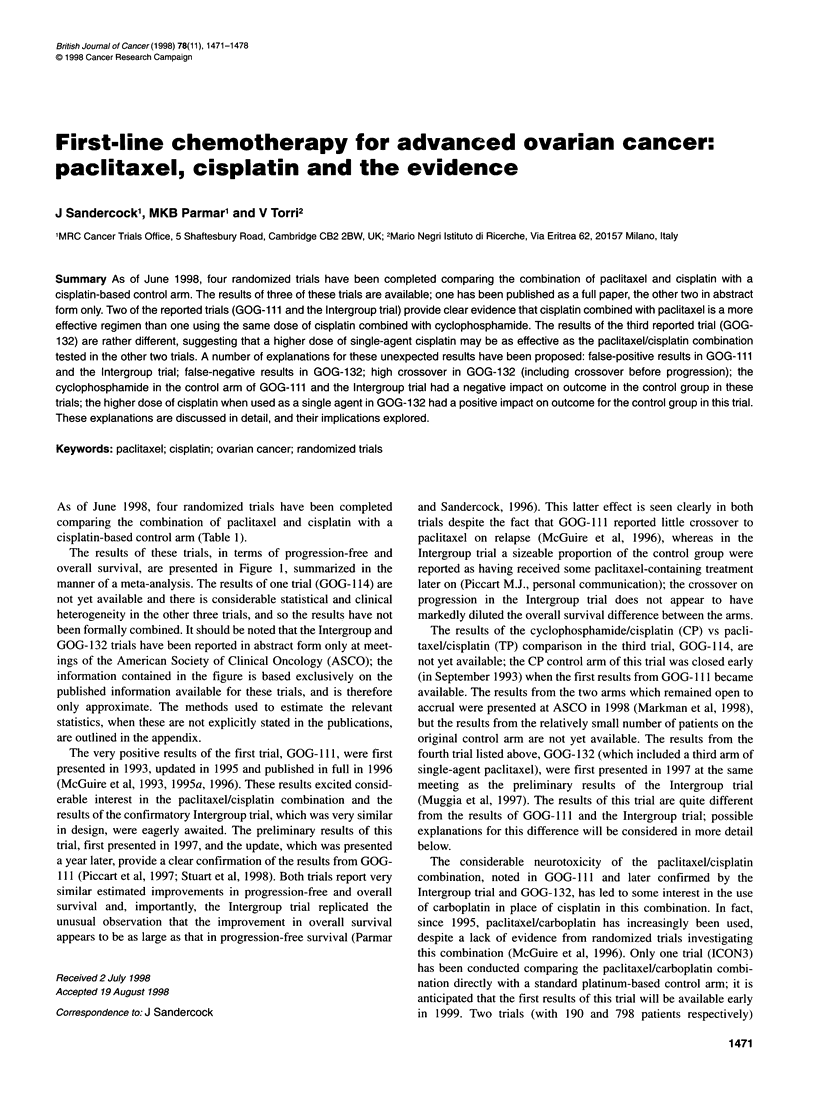
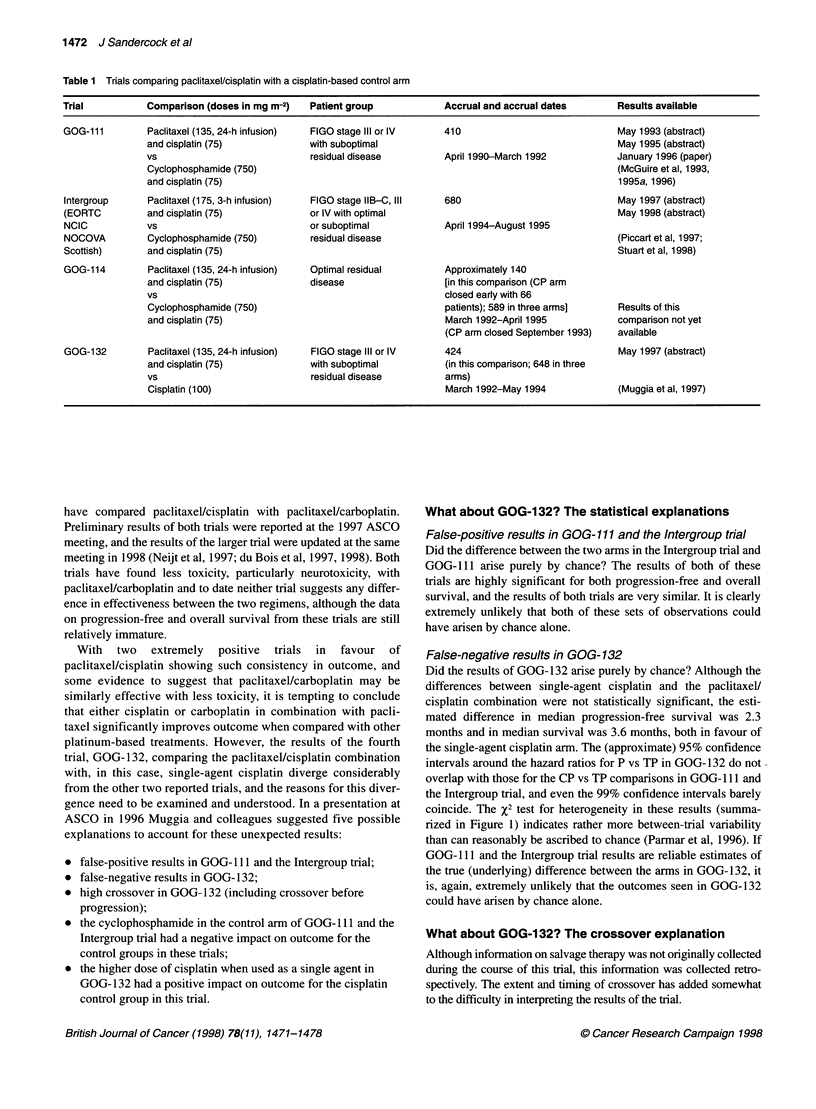
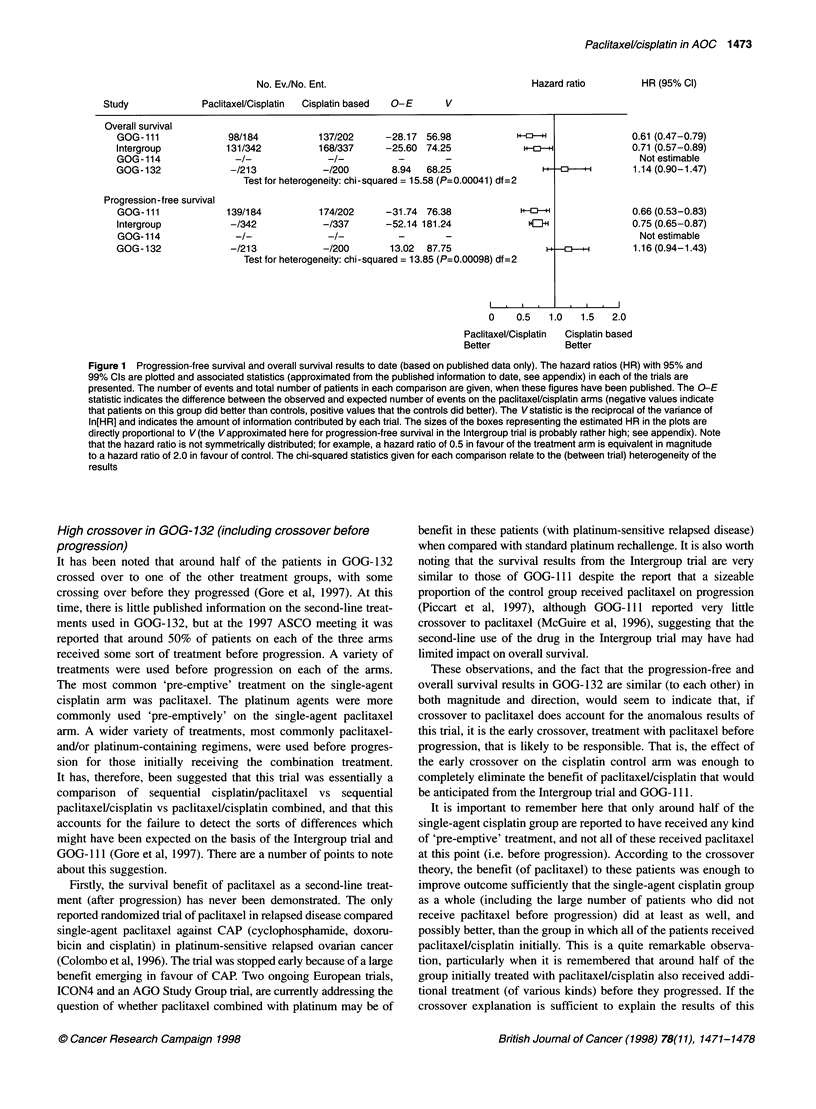
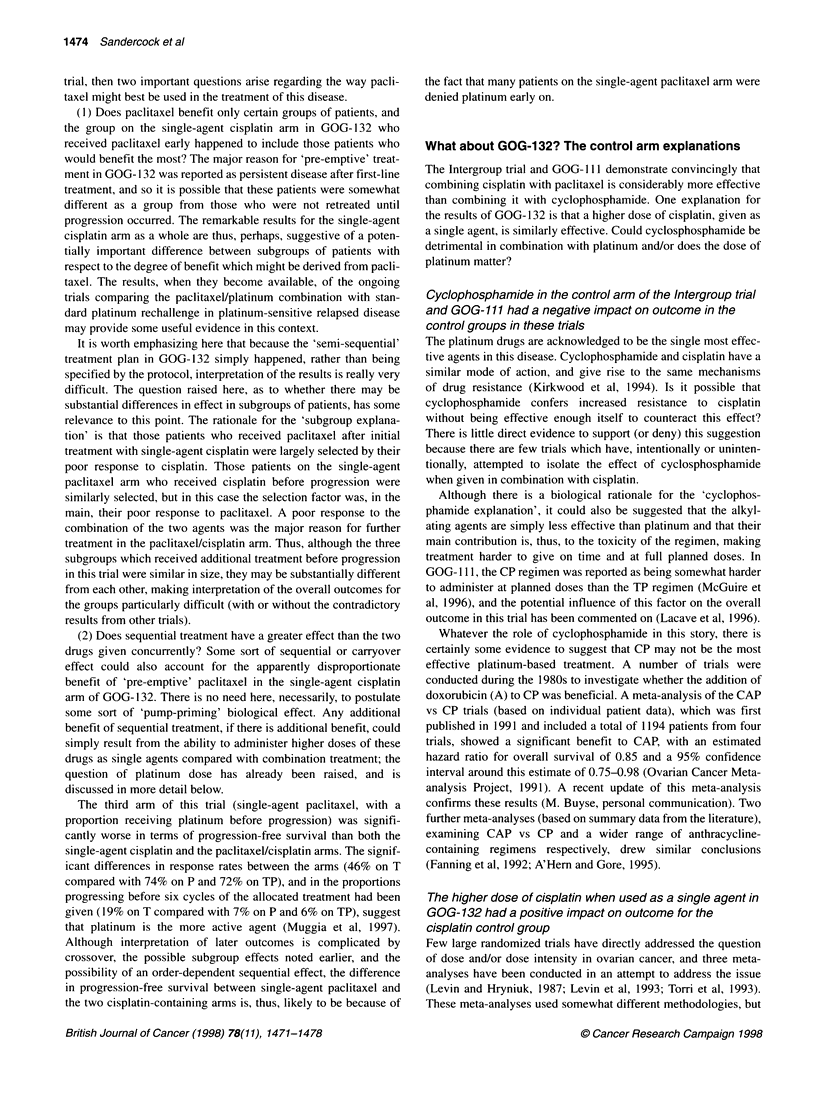
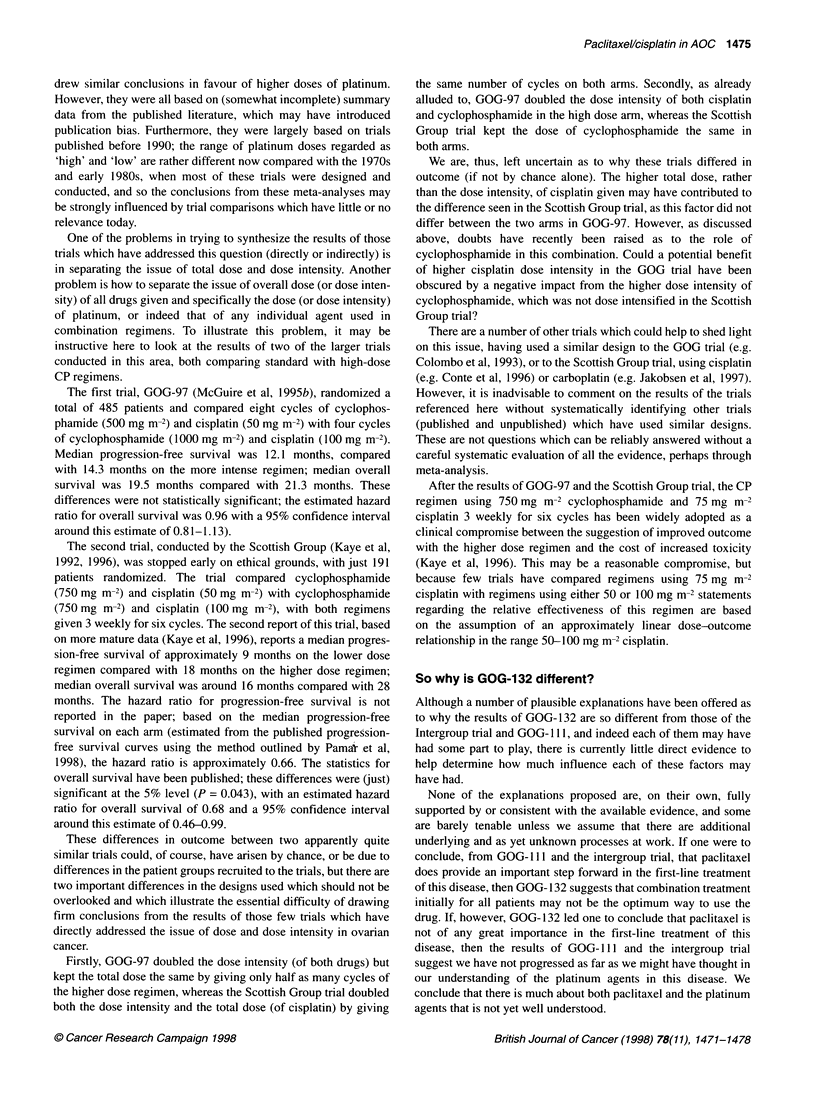
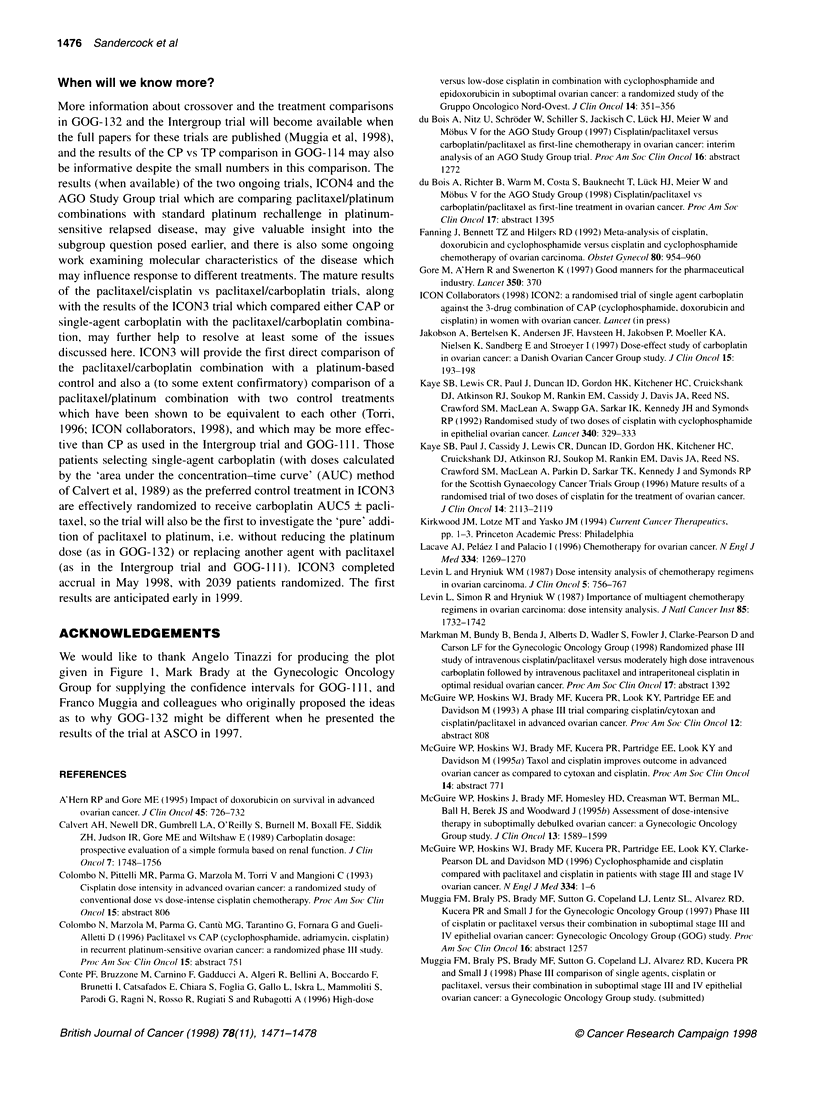
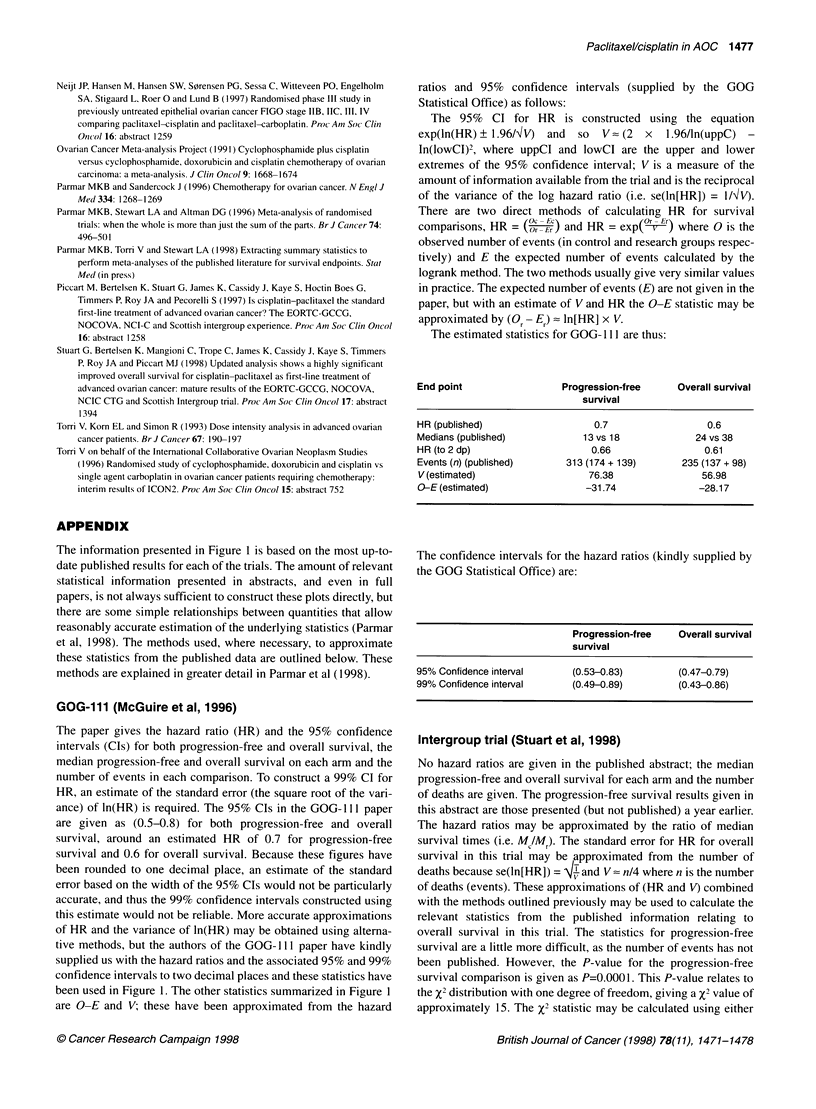
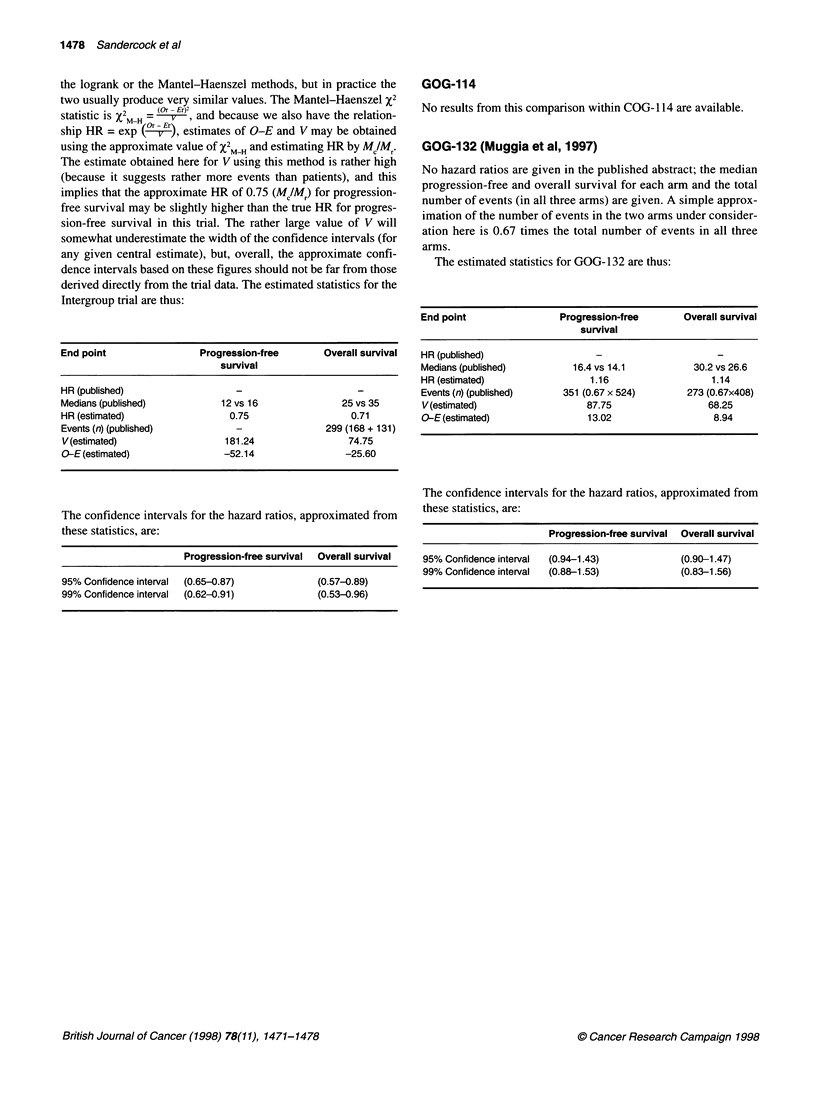
Selected References
These references are in PubMed. This may not be the complete list of references from this article.
- A'Hern R. P., Gore M. E. Impact of doxorubicin on survival in advanced ovarian cancer. J Clin Oncol. 1995 Mar;13(3):726–732. doi: 10.1200/JCO.1995.13.3.726. [DOI] [PubMed] [Google Scholar]
- Calvert A. H., Newell D. R., Gumbrell L. A., O'Reilly S., Burnell M., Boxall F. E., Siddik Z. H., Judson I. R., Gore M. E., Wiltshaw E. Carboplatin dosage: prospective evaluation of a simple formula based on renal function. J Clin Oncol. 1989 Nov;7(11):1748–1756. doi: 10.1200/JCO.1989.7.11.1748. [DOI] [PubMed] [Google Scholar]
- Conte P. F., Bruzzone M., Carnino F., Gadducci A., Algeri R., Bellini A., Boccardo F., Brunetti I., Catsafados E., Chiara S. High-dose versus low-dose cisplatin in combination with cyclophosphamide and epidoxorubicin in suboptimal ovarian cancer: a randomized study of the Gruppo Oncologico Nord-Ovest. J Clin Oncol. 1996 Feb;14(2):351–356. doi: 10.1200/JCO.1996.14.2.351. [DOI] [PubMed] [Google Scholar]
- Fanning J., Bennett T. Z., Hilgers R. D. Meta-analysis of cisplatin, doxorubicin, and cyclophosphamide versus cisplatin and cyclophosphamide chemotherapy of ovarian carcinoma. Obstet Gynecol. 1992 Dec;80(6):954–960. [PubMed] [Google Scholar]
- Gore M., A'Hern R., Swenerton K. Good manners for the pharmaceutical industry. Lancet. 1997 Aug 2;350(9074):370–370. doi: 10.1016/S0140-6736(05)63431-9. [DOI] [PubMed] [Google Scholar]
- Jakobsen A., Bertelsen K., Andersen J. E., Havsteen H., Jakobsen P., Moeller K. A., Nielsen K., Sandberg E., Stroeyer I. Dose-effect study of carboplatin in ovarian cancer: a Danish Ovarian Cancer Group study. J Clin Oncol. 1997 Jan;15(1):193–198. doi: 10.1200/JCO.1997.15.1.193. [DOI] [PubMed] [Google Scholar]
- Kaye S. B., Paul J., Cassidy J., Lewis C. R., Duncan I. D., Gordon H. K., Kitchener H. C., Cruickshank D. J., Atkinson R. J., Soukop M. Mature results of a randomized trial of two doses of cisplatin for the treatment of ovarian cancer. Scottish Gynecology Cancer Trials Group. J Clin Oncol. 1996 Jul;14(7):2113–2119. doi: 10.1200/JCO.1996.14.7.2113. [DOI] [PubMed] [Google Scholar]
- Lacave A. J., Peláez I., Palacio I. Chemotherapy for ovarian cancer. N Engl J Med. 1996 May 9;334(19):1269–1270. [PubMed] [Google Scholar]
- Levin L., Hryniuk W. M. Dose intensity analysis of chemotherapy regimens in ovarian carcinoma. J Clin Oncol. 1987 May;5(5):756–767. doi: 10.1200/JCO.1987.5.5.756. [DOI] [PubMed] [Google Scholar]
- Levin L., Simon R., Hryniuk W. Importance of multiagent chemotherapy regimens in ovarian carcinoma: dose intensity analysis. J Natl Cancer Inst. 1993 Nov 3;85(21):1732–1742. doi: 10.1093/jnci/85.21.1732. [DOI] [PubMed] [Google Scholar]
- McGuire W. P., Hoskins W. J., Brady M. F., Homesley H. D., Creasman W. T., Berman M. L., Ball H., Berek J. S., Woodward J. Assessment of dose-intensive therapy in suboptimally debulked ovarian cancer: a Gynecologic Oncology Group study. J Clin Oncol. 1995 Jul;13(7):1589–1599. doi: 10.1200/JCO.1995.13.7.1589. [DOI] [PubMed] [Google Scholar]
- Parmar M. K., Sandercock J. Chemotherapy for ovarian cancer. N Engl J Med. 1996 May 9;334(19):1268–1270. doi: 10.1056/NEJM199605093341912. [DOI] [PubMed] [Google Scholar]
- Parmar M. K., Stewart L. A., Altman D. G. Meta-analyses of randomised trials: when the whole is more than just the sum of the parts. Br J Cancer. 1996 Aug;74(4):496–501. doi: 10.1038/bjc.1996.392. [DOI] [PMC free article] [PubMed] [Google Scholar]
- Torri V., Korn E. L., Simon R. Dose intensity analysis in advanced ovarian cancer patients. Br J Cancer. 1993 Jan;67(1):190–197. doi: 10.1038/bjc.1993.33. [DOI] [PMC free article] [PubMed] [Google Scholar]


